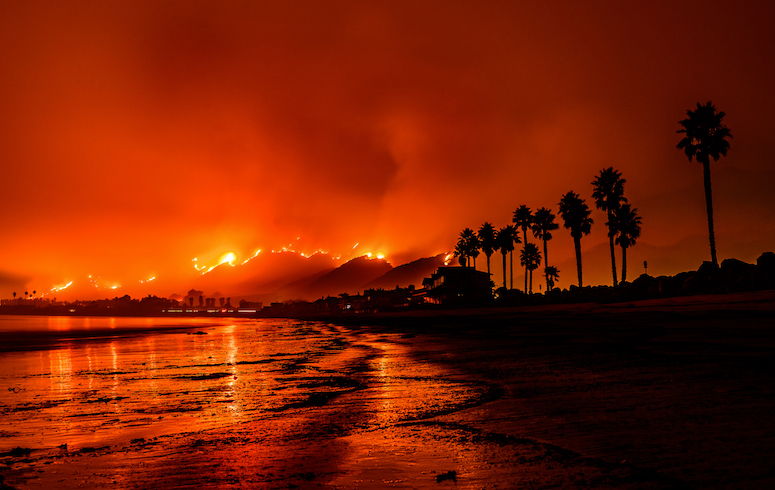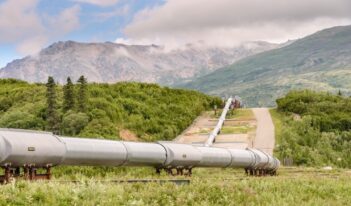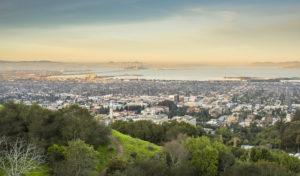
Government leaders must take swift action to mitigate the risks of wildfire disasters.
Just six wildfires caused nearly all of the $13 billion in property damage and loss from large fire incidents in 2018 in the United States. That same year, 88 people were killed in the devastating Camp Fire that obliterated the town of Paradise, California.
As millions of Californians face rounds of recurring blackouts to avoid sparking the next big blaze, it is increasingly clear that this new normal is not sustainable. Without a significant shift from fighting wildfires to preparing for them, moving to a sustainable future seems unlikely.
Hundred-year-old national fire suppression policies are well out of date for protecting communities from today’s wildfire challenge. Established by a nascent U.S. Forest Service after devastating wildfires like the 1871 Peshtigo fire and the 1910 Big Blowup, these policies called for immediate suppression of any and all fires on national forest lands.
This tactic, combined with factors such as logging’s decline and invasive species, has left forests and rangelands clogged with biomass, fueling massive and intense fires that can destroy entire communities. Even as annual federal spending for wildfire management went from roughly $1 billion per year in the mid-1990s, to close to $4 billion per year today, the average annual area burned has skyrocketed from about 2 million to 8 million acres over the same period.
Scientists have estimated the historic patterns of annual burn areas in continental U.S. forest and range land, finding that prior to these lands being settled, wildfires were many times the size of burns today. In other words, what might be thought of as the natural baseline for wildfires is much larger than what our society has actually known. Add to that a changing climate that will create hotter, drier, and more combustible conditions and we have every reason to expect massive wildfires to continue.
Just as we are coming to appreciate fire’s role in our forest and rangeland ecosystems, the human population in fire’s path keeps growing. Currently, an estimated 43 million homes are located in areas prone to wildfire, with another 17 million more likely to be built over the next two decades, if growth trends continue.
As with floods and hurricanes, wildfires are cyclical, with a return cycle that can be roughly predicted depending on local conditions. Yet we perceive and treat wildfire disasters differently. Unlike storms, which we prepare for, we fight wildfires. Perhaps this perception is fed by the fact that 84 percent of wildfire ignitions are caused by human infrastructure and actions. This “fight the fire” mentality, however, can overshadow the reality that people have the most power to save their homes and communities well before the wildfire ignites.
Preventing wildfire ignitions whenever possible is important. Even more critical is preparing our communities for wildfire with a combination of education, motivation, and regulation.
Since the mid-1980s, the National Fire Protection Association (NFPA) has worked with the U.S. Forest Service to educate about and advocate for wildfire safety principles, based on scientific research on how homes ignite in a wildfire. Points of ignition, such as vegetation close to the house, wooden decks, debris-filled gutters, and architectural features, such as eaves and soffits, are all risk factors when wildfire embers blow into a neighborhood. Beyond the home, the width of roads, multiple evacuation routes, and an adequate water supply can make the difference between safety and tragedy for residents and firefighters.
Although wildfire safety principles can effectively reduce risk in communities, they are generally only adopted on a voluntary, non-systematic basis. Voluntary action is helpful, but regulation is critical. Governing where and how we build and maintain property in areas at risk to wildfire ignition is more important than ever before, as we face a future of increasing losses to life and property.
Despite the urgency, many state and local policymakers have not yet adequately embraced wildfire risk mitigation for the built environment as a government responsibility. Inaction unfortunately characterizes the state of policymaking in hundreds of Western communities that share risk profiles similar to Paradise, California. In one such city—Payson, Arizona—the city council spent several years debating a stricter building and fire code, but when it finally acted last year, it only made minor policy changes, leaving the town’s overall risk from wildfire largely unmitigated.
Indifference to risk at the local level belies the fact that almost half of the costs of wildfire damage are borne by residents, businesses, and municipalities. It also ignores the overwhelming expectation of municipalities’ constituents that their government representatives will act to keep their homes and families safe. Local governments must address the risks they face because their residents are living on borrowed time.
NFPA and the NFPA Fire & Life Safety Policy Institute have spelled out the path to preparedness for local officials. Preparedness must include assessing community vulnerability, developing a regulatory framework, educating residents, planning for evacuations, and providing local fire departments with training, equipment, and safe access routes.
Many of the tools and resources to aid local and state officials are available at no cost, including: NFPA’s Firewise USA® recognition program for residents; NFPA’s best practices guide for planners and regulators; the U.S. Fire Administration’s Wildland Urban Interface Toolkit; and evacuation guidance from the U.S. Federal Highway Administration and the American Red Cross.
There was once an era in U.S. history when a single structure fire caused entire cities, such as Boston, Chicago, and Baltimore to burn to the ground. Today, a well-functioning fire and life safety ecosystem of interdependent safety policies and practices make urban conflagrations an exceedingly rare event. Central to the ecosystem is government responsibility—the tenet that policymakers are uniquely capable of taking steps to reduce risks to our community.
Wildfires are inevitable, but wildfire disasters are not. Leaders must acknowledge wildfires as a solvable problem if we are to have any hope of a sustainable future.




